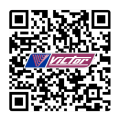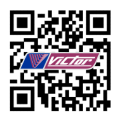

News
Cartesian robots - will be the best seller in the Chinese market
Release time:
2019/03/14
Speaking of Cartesian robots, many people may not call them robots, but in a broad sense, it can also be counted as a robot. According to the market application, Cartesian robots account for the largest proportion of applications in the Chinese market, and applications are more extensive.
As the most simple system structure of industrial robots, Cartesian coordinates robots are widely used in dispensing, injection molding, painting, palletizing, handling, loading and unloading because of their low cost and flexible assembly according to different situations. And other common industrial production areas. At present, about 40% of the industrial robots used in China are Cartesian robots.
The application and advantages of Cartesian robot
Cartesian robots, also known as single-axis robots, industrial robot arms, electric cylinders, etc., are based on the XYZ rectangular coordinate system. The single-axis robot arm driven by servo motor and stepper motor is the basic working unit. The screw system, the timing belt and the rack and pinion are robot systems constructed by the common transmission mode, which can complete the arrival and follow the controllable motion track at any point in the XYZ three-dimensional coordinate system.
Cartesian robots can be easily used as various automation equipments due to different end-operating tools, such as welding, handling, loading and unloading, packaging, palletizing, demolition, inspection, flaw detection, sorting, assembly, labeling, Spraying, coding, (soft copy) spraying, target following, detonation and other work. Applications include electronics, machinery, automotive, food and many other industries.
Compared with the articulated robot, the Cartesian robot is not only simple in structure but also low in cost. The Cartesian coordinate combination method is flexible and can be assembled into single-axis to multi-axis robots, such as gantry, cantilever, wall-mounted, etc., and can also be customized for different loads, strokes, functions and special space requirements. Demand products. At the same time, the X, Y and Z axes can be extended to rotate the axis and flip the axis to form a five-degree-of-freedom and six-degree-of-freedom robot, or as a linear positioning system in professional automated machinery.
Compared to manual, Cartesian robots have unparalleled advantages. Right-angle coordinate robots have fast running speed and high repeatability, which can save labor costs and increase production capacity quickly. It is suitable for mass production, shortens delivery time, ensures product quality stability, uniformity and consistency, and manufactures. The products that come out are more secure.
According to the latest statistics, in 2014, the sales of most Cartesian robot manufacturers achieved a large increase. Last year, the sales volume of Cartesian robots in China reached 18,000 units, with a total output value of 162 million yuan, a year-on-year increase of 30%. At present, about 40% of the industrial robots used in China are Cartesian coordinates, and Cartesian coordinates are the most sold type of robots in the Chinese industrial robot market.
Imitation--improvement--original Cartesian robot evolution three steps
In China, the development history of Cartesian robots has been more than 20 years, and the transformation of testing and introduction to independent development has basically been realized. Although the strength of the domestic Cartesian robot cannot be compared with the foreign brands, the Cartesian robot is the highest industrial robot in the country. In China's large demand market for robots, considering the various factors, it is obviously a good choice for many enterprises, especially downstream applications.
"For historical reasons, China's single-axis robots have mainly experienced three stages, imitating - improving - original. But at this stage, most of the domestic single-axis and Cartesian robots are still in the imitation stage, if we can not carry out originality Product development and design, then we can not grow a first-class single-axis and Cartesian robot brand." Shenzhen Xinguang Chairman Xiao Xinchun introduced the new strategic robot all-media reporter.
Wu Xueliang, general manager of Shenzhen Weiluobo also expressed the same view: "At present, China's linear manipulators mainly focus on module sales, which is the first stage of industrial development, and also the stage of domestic brand standing and hard work. In the future, Willowbo hopes to take the second stage through branding – selling machine coordinate robots and reliability solutions.”
Opportunities and challenges for domestic Cartesian robots
At this stage, the most popular application space for Cartesian robots lies in the 3C electronics market. The sales of Cartesian coordinates robots in the 3C industry account for half of the overall sales. In addition to the 3C industry, the demand for Cartesian robots in the fields of food, medicine, injection molding, and machinery has also increased year by year.
Domestic Cartesian robots are rapidly emerging, but they are subject to factors such as high cost, small scale, and insufficient technical content. There is still a gap between foreign brands that have accumulated for more than 30 years. Most of Cartesian robots in China are not as fast, accurate, and stable as foreign brands, and their control systems need to be imported from abroad. According to relevant statistics, in the Chinese market in 2014, Cartesian robots accounted for 42.22% of the domestic market, and the remaining 57.78% were all occupied by foreign brands.
In the production process, due to the accuracy of the machining, the rigidity of the profile, and the purchase price of the key components, it is the same as the encounter with the multi-joint robot in the localization. Some key points of the Cartesian robot Parts also need to rely on imports. It can be seen that on the road of catching up with foreign capital, the road of domestic Cartesian robots is still very difficult.
Fortunately, domestic Cartesian robot companies have already seen problems, and have strengthened their ability to develop independently from various aspects, and determined to build their own brand products, relying on the trend of price wars to be gradually removed. For example, Shenzhen Yinguang began to seek cooperation with domestically produced excellent controller manufacturers; Shenzhen Weiluobo did not engage in direct sales, but created a domestic brand image; Dongguan Kaibao also cooperated with foreign-funded enterprises.
Future Cartesian coordinates can be oriented towards modular development
With the continuous development of Cartesian robots, the future extends to modular robots.
The modular industrial robot consists of several functional units (modules) with friendly mechanism connection and electrical connection interface, which can quickly realize the change of structure style, function conversion, reconstruction and expansion.
Modular industrial robots mainly consist of three stages. The first stage is a Cartesian coordinate robot, which is a modular primary stage, which is mainly composed of X, Y, and Z axes. The advantages of Cartesian coordinates robot are: It can be quickly combined and reconstructed by single-axis module; the algorithm is simple, and the space curve and trajectory can be realized by linear difference compensation and circular interpolation; high precision, low cost, and can be directly grafted to automation Equipment and production lines. However, the disadvantage of the Cartesian robot is that the body structure lacks flexibility and the space utilization rate is low; the working dead angle area is large, the narrow space cannot enter, and it is easy to interfere and collide with surrounding objects; the stroke change is difficult. Irreversible.
The second stage is an expandable tandem robot, typically consisting of three to six joint modules that can be adjusted or replaced. The advantages include selecting the number of axes and adjusting the arm length according to the needs of the site; the space utilization is high, and the space can be deepened; the body is lighter and lighter than the conventional robot. The disadvantage is that it is only suitable for the lighter case, which is an advantage for the 3C industry; the rigidity is worse than the Cartesian coordinates. Control tends to be complicated; accuracy control is more difficult.
The third stage is the bionic robot, bionic design, infinite joints and degrees of freedom. It looks like a dragonfly and a trunk. Its characteristics are mainly more freedom and more flexible; it can bypass obstacles and carry out fine work; it is a very valuable application in the future.
Related news
2019-03-14
2019-03-14

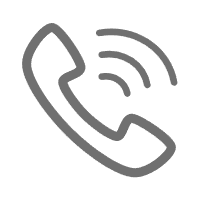

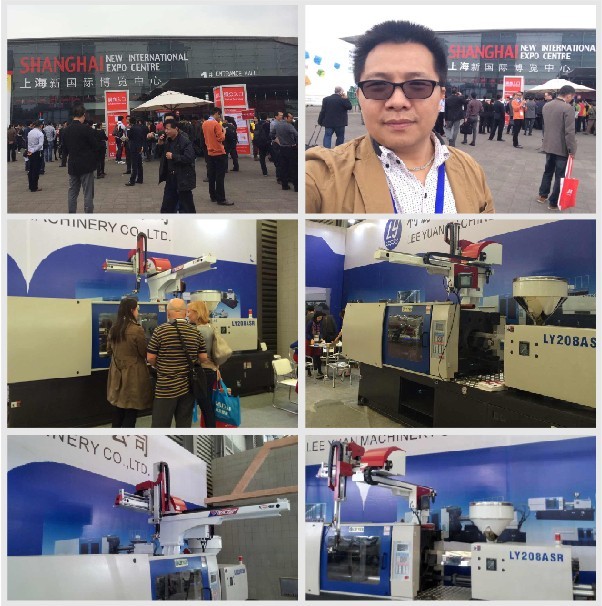
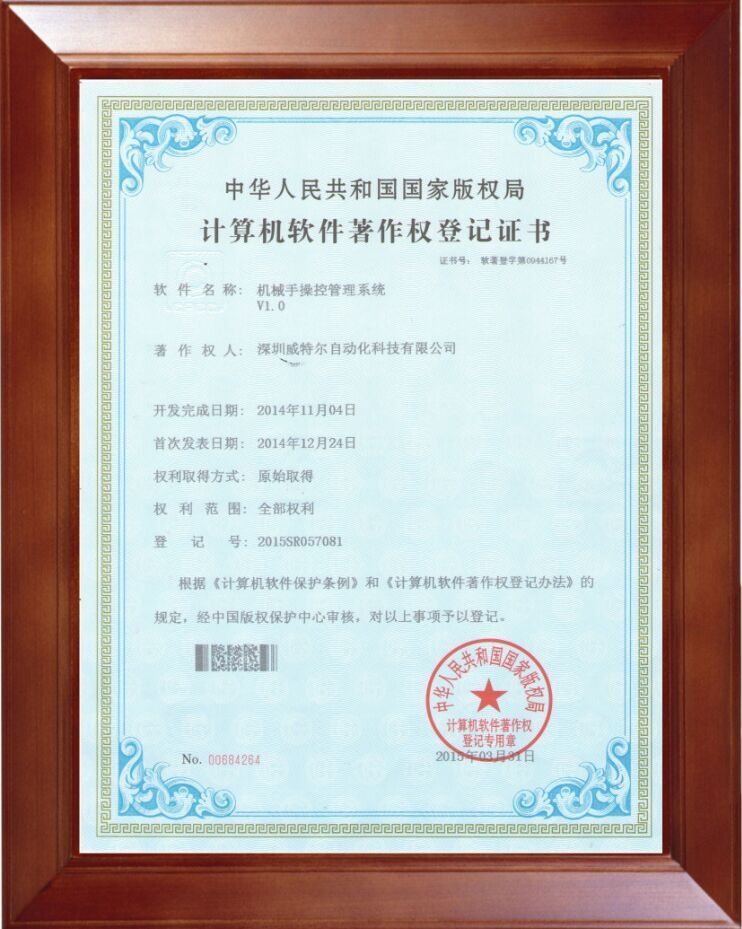
![[Pu Daxi Ben] - Weitel Robot Project won 600,000 yuan from Shenzhen Science and Technology Commission [Pu Daxi Ben] - Weitel Robot Project won 600,000 yuan from Shenzhen Science and Technology Commission](https://omo-oss-image.thefastimg.com/portal-saas/new2023041417545479371/cms/image/4f67a616-22b8-4e42-80fb-0188250e15d4.png)
